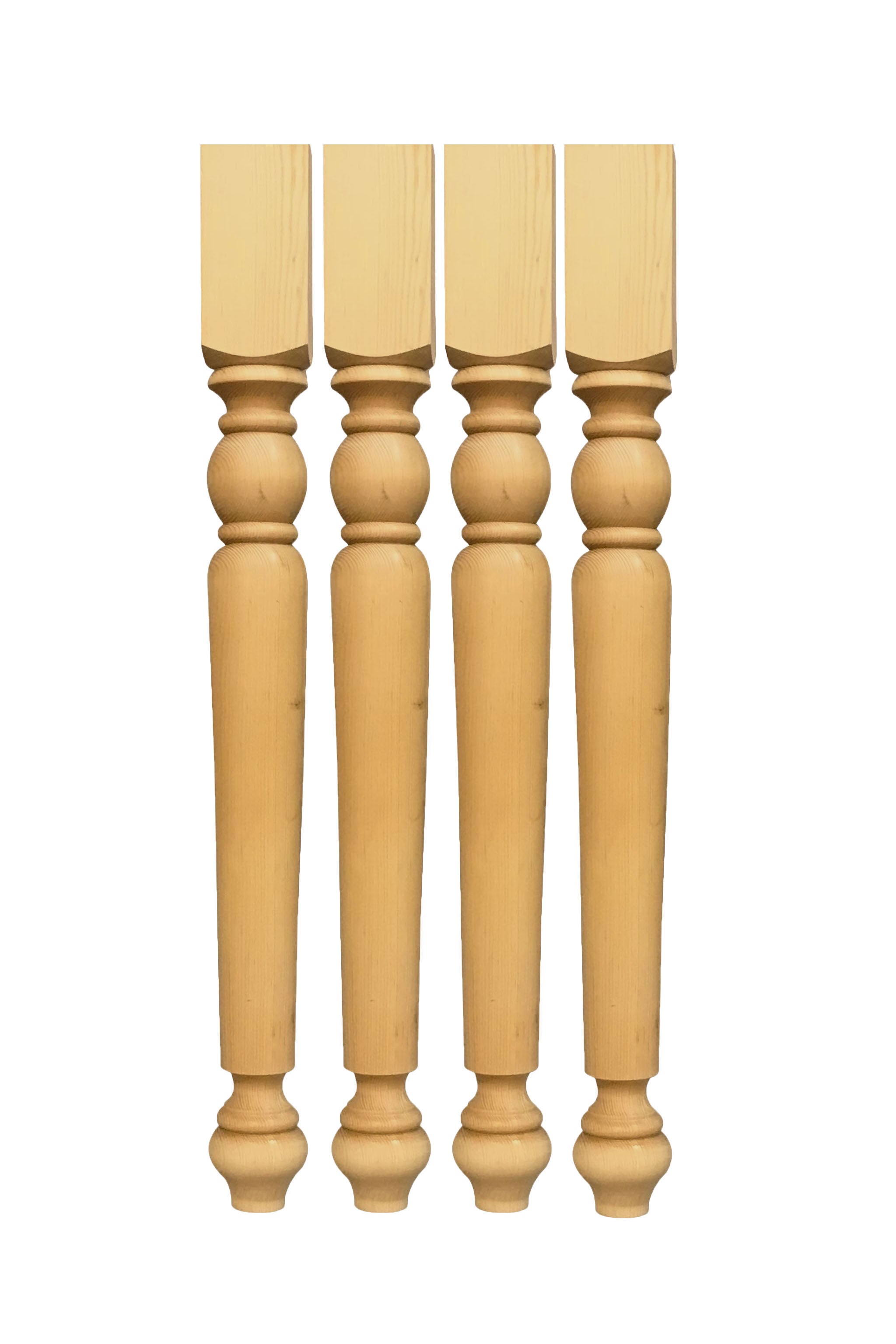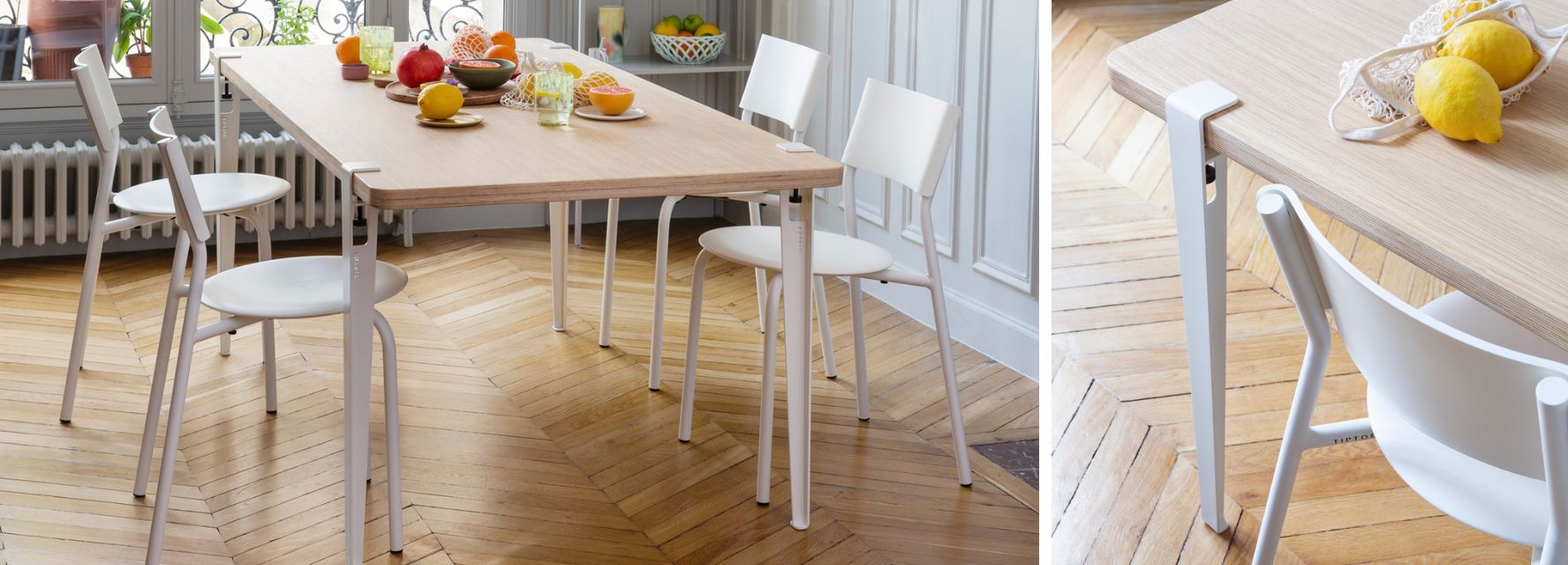Secret Elements to Maintain in Mind for Table Legs Wood Choices
When selecting timber for eating table legs, a number of crucial variables warrant careful consideration to make sure both capability and aesthetic allure. The choice of timber kind, defined by its longevity and one-of-a-kind grain patterns, plays an essential role in the total style and long life of the piece. Additionally, one must ponder maintenance demands and the ecological ramifications of sourcing products. As these elements link, they dramatically influence the last outcome of your table. Nonetheless, comprehending the subtleties of each factor can be complicated, causing vital choices that warrant additional expedition.
Wood Types and Attributes
When picking wood for eating table legs, it is necessary to recognize the distinct attributes of different wood kinds. Various timbers use unique benefits and negative aspects, affecting both the toughness and aesthetic charm of the ended up item.
Hardwoods, such as cherry, oak, and maple, are commonly liked for their stamina and resistance to wear. Oak, known for its outstanding toughness, likewise features a popular grain that can add personality to the table. Maple supplies a smooth surface and is much less prone to bending, making it a trusted choice for functional furnishings. Cherry timber, with its abundant color that deepens over time, gives a lavish look but might call for even more upkeep to protect against scratches.
On the various other hand, softwoods like yearn and fir are much more inexpensive and easier to function with, yet they are less sturdy than hardwoods. Pine is light-weight and includes a warm, rustic appearance, making it a popular choice for informal dining settings. Nonetheless, it is much more at risk to scrapes and damages.
Understanding these attributes will assist in making an informed decision to make sure the legs of the eating table satisfy both useful and aesthetic requirements.
Grain Patterns and Aesthetics
The timber's grain is not just an aesthetic quality; it conveys an one-of-a-kind character and charm to each item. Different wood types show distinctive grain patterns, ranging from the straight lines of maple to the intricate swirls of oak and the striking figure of walnut.
In addition, the alignment and scale of the grain can affect the regarded size and style of the table. Bigger, more pronounced grains might offer a bold, remarkable impact, while finer, subtler grains can create an improved, underrated look. Additionally, the ending up procedure can further improve these patterns, emphasizing the all-natural charm of the timber and bringing out abundant tones.
Inevitably, the selection of grain pattern ought to harmonize with other style elements, such as the tabletop and bordering furnishings, guaranteeing a natural visual that raises the dining experience. Thoughtful choice of wood grain not just adds to the table's elegance but additionally shows the proprietor's preference and design.
Sturdiness and Toughness
The toughness and toughness of dining table legs are critical considerations for guaranteeing long life and security in any type of eating room. Selecting the right timber is crucial, as various species display differing levels of strength. Hardwoods such as oak, cherry, and maple are typically liked for their fundamental stamina and resistance to wear. These materials not only stand up to day-to-day usage yet additionally sustain hefty loads, making them optimal for eating tables that often fit multiple diners. Dining Table Legs Wood.

Eventually, purchasing high-quality timber and robust building and construction techniques will certainly generate a table that stands the examination of time, while supplying a dependable foundation for numerous dishes shared among family members and friends. Prioritizing sturdiness and stamina makes certain that your table continues to be useful and aesthetically pleasing for years to come.
Maintenance and Care
Proper maintenance and treatment are vital for protecting the durability and strength of table legs made from wood. Normal cleaning is vital; making use of a soft, moist towel ensures that dirt and debris do not gather, which can bring about useful content scrapes and monotony. It is recommended to prevent extreme chemicals or unpleasant products that might damage the coating.
Furthermore, using an appropriate wood gloss or wax occasionally can assist maintain the luster and safeguard the wood from moisture and spills. It is crucial to follow the supplier's referrals pertaining to the type of product to make use of, as certain surfaces might react detrimentally to details chemicals.
Humidity and temperature fluctuations can additionally influence wooden table legs, triggering them to warp or split. It's ideal to place the table away from direct sunlight and warmth sources. Addressing these immediately can protect against further damage. if the table legs have any type of damages or scrapes.
Lastly, regularly checking the joints and screws for rigidity is necessary to maintain structural honesty (Dining Table Legs Wood). By sticking Resources to these maintenance methods, property owners can ensure their wooden eating table legs continue to be attractive and useful for several years ahead
Ecological Considerations
When choosing timber for eating table legs, it's important to take ecological considerations into account. The sourcing and sustainability of timber are critical in decreasing ecological influence. Going with wood from certified sources, such as those endorsed by the Woodland Stewardship Council (FSC), ensures that the lumber is collected sensibly, advertising forest preservation and biodiversity.

Furthermore, local sourcing of timber minimizes transportation exhausts, supporting local economic climates while reducing ecological effect. It is likewise a good idea to be mindful of the timber's therapy and completing procedures, as certain chemicals can be dangerous to both human wellness and the environment. By prioritizing lasting wood selections, customers can contribute to ecological conservation while taking pleasure in the sturdiness and charm of their dining table legs.
Conclusion
In conclusion, choosing timber for eating table legs necessitates cautious factor to consider of various variables, including timber types, grain patterns, and longevity. The Visit Website visual allure of one-of-a-kind grain patterns can enhance the general design, while the strength of hardwoods ensures long life. Upkeep demands and ecological sustainability further influence wood choices, highlighting the relevance of sourcing from licensed or reclaimed products. A notified choice procedure eventually adds to a visually attractive and useful eating area that aligns with lasting methods.
When selecting timber for eating table legs, several vital elements call for cautious consideration to ensure both capability and visual charm.Proper maintenance and treatment are essential for maintaining the sturdiness and stamina of eating table legs made from wood.When choosing timber for dining table legs, it's vital to take environmental considerations into account. By focusing on lasting wood options, consumers can add to environmental conservation while appreciating the toughness and charm of their eating table legs.
In conclusion, selecting timber for dining table legs requires careful factor to consider of numerous factors, including timber types, grain patterns, and durability. Dining Table Legs Wood.